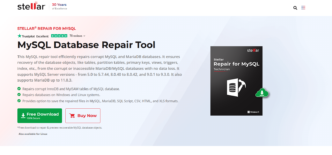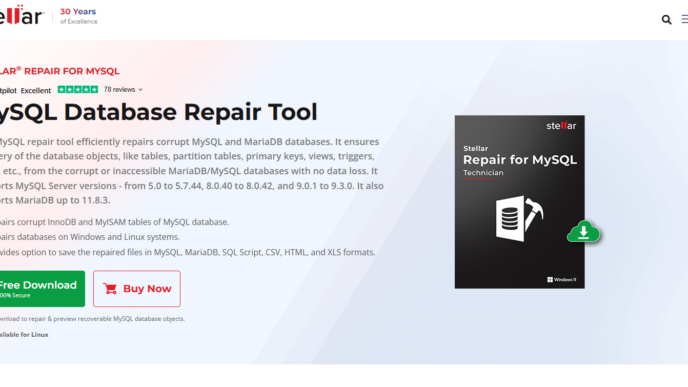Every few years, the tools we use to automate work shift. In 2025, picking the best programming language for automation can mean fewer headaches and faster results. This post walks through how to weigh speed, tool support, and ease of use. We look at Python, Go, Rust, JavaScript/TypeScript, and shell options. By the end, you’ll know which path fits your next project.
Key Takeaways
- Choose a language based on performance, how it fits with existing tools, and available libraries
- Python remains a top pick thanks to its mature automation frameworks and quick scripting
- Go offers built-in support for parallel tasks and easy deployment in cloud environments
- Rust brings strong memory safety and growing low-level system libraries for mission-critical workflows
- JavaScript/TypeScript and shell scripts cover web automation and cross-platform system tasks with solid community support
Evaluating Criteria For The Best Programming Language For Automation
Okay, so you’re trying to figure out the best language for automation in 2025. It’s not just about picking the flashiest new thing; it’s about what actually works for your specific needs. There are a few key things to consider before you jump in. Let’s break it down.
Performance And Concurrency Considerations
First off, how fast does it need to be? Performance is key, especially when you’re dealing with large-scale automation. A language that’s slow or clunky can really bog things down. Think about the kind of tasks you’ll be automating. Are they CPU-intensive? Do they require a lot of I/O? Also, concurrency matters. Can the language handle multiple tasks at the same time efficiently? Some languages have built-in support for concurrency, which can make a huge difference in performance. For example, Go is known for its excellent concurrency features.
Ease Of Integration With Existing Tools
Next up, how well does the language play with others? You probably already have a bunch of tools and systems in place. The language you choose needs to integrate smoothly with those. If it doesn’t, you’re going to spend a ton of time wrestling with compatibility issues. Look for languages that have good support for common protocols and formats. Think about APIs, databases, and other services you’ll need to connect to. The easier it is to integrate with existing tools, the better.
Community Ecosystem And Library Support
Finally, don’t underestimate the power of a strong community. A large and active community means there are more resources available, like libraries, frameworks, and tutorials. If you run into a problem, chances are someone else has already solved it. Plus, a vibrant community usually means the language is well-maintained and constantly improving. Look at the number of available libraries for automation tasks. Python, for example, has a massive ecosystem with tons of open-source automation testing libraries.
Leveraging Python As The Best Programming Language For Automation
Python continues to be a top choice for automation in 2025, and for good reason. Its clear syntax and extensive libraries make it accessible to both beginners and experienced developers. It’s not just about ease of use; Python’s versatility allows it to handle a wide range of automation tasks, from simple scripting to complex workflow orchestration. But is it the best? Let’s explore.
Popular Automation Frameworks And Libraries
Python boasts a rich ecosystem of automation tools. You’ve got libraries like:
- Selenium: For web browser automation, perfect for testing and scraping.
- Ansible: For configuration management and infrastructure as code.
- Requests: For making HTTP requests, ideal for interacting with APIs.
- PyAutoGUI: For controlling the mouse and keyboard, useful for automating desktop applications.
These tools, combined with Python’s flexibility, make it a powerhouse for automating repetitive tasks. The network automation market is growing, and Python is right there at the forefront.
Rapid Prototyping And Script Development
One of Python’s strengths is how quickly you can go from idea to working script. Its interpreted nature means you don’t have to compile code before running it, which speeds up the development process. Plus, the syntax is easy to read and write, so you can focus on the logic of your automation rather than wrestling with the language itself. This is especially helpful when you need to quickly adapt to changing requirements or test out different approaches. It’s why Python remains the best all-purpose programming language for many.
Integration With DevOps Pipelines
Python plays well with others, especially in DevOps environments. It integrates smoothly with popular tools like Jenkins, GitLab CI, and CircleCI. This allows you to automate your entire software development lifecycle, from building and testing to deployment and monitoring. Python scripts can be used to automate infrastructure provisioning, application deployments, and even security checks. This level of integration is key to achieving continuous integration and continuous delivery (CI/CD), which are essential for modern software development.
Harnessing Go For High-Throughput Automation Pipelines

Go, often called Golang, has become a real contender in the automation space, especially when you’re dealing with tasks that need to happen fast and at scale. I’ve been playing around with it for a few months, and I’m starting to see why so many people are excited about it. It’s not just hype; it’s a genuinely useful language for building robust automation systems. Go’s strength lies in its ability to handle concurrency and its efficient compilation, making it perfect for high-throughput scenarios.
Built-In Concurrency Models
One of the coolest things about Go is its built-in support for concurrency using goroutines and channels. Forget messing around with threads and locks; goroutines are lightweight, and channels provide a clean way for them to communicate. I remember struggling with multithreading in Python, and Go just makes it so much easier. It’s like the language was designed from the ground up to handle parallel tasks. This is a game-changer for automation pipelines where you need to run multiple processes simultaneously without bogging down the system. Think about orchestrating cloud deployments or processing massive amounts of data – Go handles it like a champ. cloud deployments are easier with Go.
Static Typing And Compilation Advantages
Go’s static typing might seem like a pain at first if you’re coming from a dynamically typed language like Python, but trust me, it pays off in the long run. Catching errors at compile time rather than runtime saves you a ton of headaches. Plus, the compilation process is super fast, and it produces standalone binaries that are easy to deploy. No need to worry about dependencies or interpreters; just copy the binary, and you’re good to go. This makes Go a great choice for building automation tools that need to be reliable and easy to distribute. I’ve had fewer deployment issues with Go than with any other language I’ve used.
Deployment In Cloud Native Environments
Go is practically synonymous with cloud-native development. Docker and Kubernetes, two of the most important technologies in the cloud world, are written in Go. This means that Go integrates seamlessly with these platforms, making it an excellent choice for automating tasks in cloud environments. Whether you’re automating deployments, managing infrastructure, or building serverless functions, Go has you covered. I’ve found that using Go with Kubernetes simplifies complex automation workflows and makes them much more manageable. Plus, the performance benefits are noticeable, especially when dealing with large-scale deployments. It’s like Go was born to live in the cloud. Here’s a quick look at why Go is so popular in cloud environments:
- Lightweight binaries: Easy to deploy and scale.
- Concurrency: Handles multiple tasks efficiently.
- Strong standard library: Provides tools for networking and cloud services.
Ensuring Reliability With Rust-Based Automation
Rust has been gaining traction as a language for automation, especially where reliability and safety are paramount. It’s not your typical scripting language, but its unique features make it a strong contender for critical automation tasks. I’ve been playing around with it, and while the learning curve is real, the peace of mind it offers is pretty compelling.
Memory Safety For Critical Workflows
One of Rust’s biggest selling points is its memory safety. Rust prevents memory-related bugs at compile time, eliminating common issues like null pointer dereferences and data races. This is a huge deal for automation workflows where a crash could have serious consequences. Think about industrial control systems or financial trading platforms – you really don’t want those going down because of a memory leak. Rust’s ownership and borrowing system ensures that memory is managed safely without needing a garbage collector, which can introduce unpredictable pauses. This makes it suitable for real-time automation scenarios. For example, the Rust MCP server is an AI-driven tool that helps enforce Rust idioms and best practices.
Interfacing With Low-Level Systems
Rust shines when you need to interact directly with hardware or low-level system resources. Its ability to perform close to C/C++ in speed, but with added safety, makes it ideal for automating tasks that require precise control over system resources. This is particularly useful in areas like embedded systems, network automation, and robotics. You can write drivers, control devices, and manage system configurations with a high degree of confidence. Plus, Rust’s foreign function interface (FFI) allows you to integrate with existing C libraries, so you don’t have to rewrite everything from scratch.
Growth Of The Crate Ecosystem
While Rust’s ecosystem is still smaller than Python’s, it’s growing rapidly. The Rust community is very active, and there’s a strong focus on quality and reliability. Crates.io, Rust’s package registry, offers a wide range of libraries for various automation tasks. You can find crates for things like:
- Network programming
- Data parsing
- System administration
- Concurrency
And because Rust emphasizes safety, you can generally trust that these crates are well-tested and won’t introduce unexpected vulnerabilities. The Rust language is becoming more and more popular.
Optimizing Web Automation With JavaScript And TypeScript

JavaScript and TypeScript are super important for automating stuff on the web. I mean, JavaScript is the language of the web, right? And TypeScript just makes it…better. Let’s get into why they’re so good for automation.
Headless Browser Control Techniques
Okay, so first up: headless browsers. Think of them as browsers without a face. You can control them with code, and they’ll do all the stuff a normal browser does, but without actually showing you anything. This is huge for automation because it means you can run tests and scripts in the background without needing a real browser window open. Puppeteer and Playwright are the big players here. They let you do things like:
- Click buttons
- Fill out forms
- Scrape data
- Take screenshots
And all of this can be automated. It’s pretty cool. You can even compare Selenium and Playwright to see which one fits your needs better.
Static Typing For Maintainable Scripts
This is where TypeScript shines. JavaScript is…flexible. Sometimes too flexible. TypeScript adds types to JavaScript, which means you can catch errors before you run your code. This is a game-changer for big automation projects. It makes your code way easier to read, understand, and maintain. Plus, it helps prevent those annoying runtime errors that pop up at the worst possible times. Think of it like this:
| Feature | JavaScript | TypeScript |
|---|---|---|
| Typing | Dynamic | Static |
| Error Detection | Runtime | Compile-time |
| Maintainability | Lower | Higher |
Integration With Frontend And Backend Services
One of the best things about JavaScript and TypeScript is how well they play with others. You can use them to automate tasks that involve both the front end (what the user sees) and the back end (the server-side stuff). For example, you could automate:
- Testing a new feature on a website.
- Deploying code to a server.
- Monitoring the performance of a web application.
Because JavaScript runs everywhere (thanks to Node.js), you can use the same language for all your automation scripts. This makes things a lot simpler and more efficient. Plus, with frameworks like React, Angular, and Vue.js, building complex automation workflows becomes much more manageable. It’s a win-win.
Choosing The Right Scripting Language For System Automation
When it comes to system automation, picking the right scripting language is key. It’s not just about what’s popular, but what fits best with your environment and the tasks you need to automate. Different operating systems and automation goals often call for different tools. Let’s explore some common choices.
PowerShell For Windows Administration
PowerShell is Microsoft’s answer to automation, and it’s deeply integrated with the Windows operating system. It’s built on the .NET framework, which means it can interact with almost any aspect of Windows. If you’re primarily managing Windows servers or desktops, PowerShell is a must-know. It lets you automate complex tasks, manage configurations, and even handle cloud services through Azure. It’s also cross-platform, with support for Linux and macOS.
Bash And Shell Scripting On Unix Systems
Bash is the default shell for many Unix-based systems, including Linux and macOS. It’s been around for a long time, and it’s incredibly powerful for automating tasks from the command line. Shell scripts are used for everything from simple file manipulation to complex system administration. If you’re working with Linux servers, embedded systems, or even macOS, knowing Bash is essential. It’s a standard tool for Linux/Unix administrators to automate tasks, manage files, process text, and perform system operations. You can use Linux systems to automate repetitive tasks through shell scripts.
Cross-Platform Portability And Tooling
While PowerShell excels on Windows and Bash dominates Unix-like systems, sometimes you need a language that works everywhere. Python is a great choice for cross-platform automation. It’s available on Windows, macOS, and Linux, and it has a huge library of modules for interacting with different systems and services. Other options include languages like Perl, which is still heavily used in system administration and network programming for its skill in text manipulation, and even Tcl, which is widely used in network administration and automated testing. Here’s a quick comparison:
| Language | Primary Use Case | Cross-Platform Support | Learning Curve |
|---|---|---|---|
| PowerShell | Windows Administration | Yes | Medium |
| Bash | Unix/Linux Administration | Limited | Medium |
| Python | General Automation, Cross-Platform | Yes | Easy |
| Perl | Text Processing, System Admin | Yes | Medium |
| Tcl | Network Admin, Automated Testing | Yes | Medium |
Ultimately, the best scripting language depends on your specific needs and environment. Consider the systems you’re managing, the tasks you need to automate, and your team’s existing skills when making your decision. You can also use smart garage door openers to automate tasks.
Future Trends Shaping The Best Programming Language For Automation
AI-Driven Code Generation And Assistance
Okay, so, AI is getting pretty good at writing code. I mean, not perfect, but good enough to help out a lot. Think of it like having a super-smart pair programmer that never sleeps. These AI tools can suggest code snippets, debug errors, and even generate entire functions based on natural language descriptions. It’s wild. This means that the languages that play nice with these AI assistants will probably become even more popular. Imagine telling an AI, "Hey, write a script to automate this tedious task," and it just does it. That’s where we’re headed. It will be interesting to see how this impacts the demand for different languages. Will it make some languages obsolete, or will it just make everyone more productive? I’m betting on the latter, at least for now.
Low-Code Solutions For Rapid Deployment
Low-code platforms are becoming a big deal, and for good reason. Not everyone is a coding whiz, and sometimes you just need to get something done quickly. These platforms let you build automation workflows with drag-and-drop interfaces and pre-built components. It’s like building with Lego bricks, but for software. This is especially useful for automating simple tasks or creating internal tools. The rise of low-code doesn’t mean traditional programming is going away, though. It just means that there are more options for people with different skill levels. Plus, low-code platforms often integrate with existing codebases, so you can use them to extend the functionality of your existing systems. It’s all about finding the right tool for the job.
Security And Compliance In Automated Workflows
Security is always a concern, but it’s especially important when you’re automating things. If your automation scripts have vulnerabilities, attackers can exploit them to gain access to your systems. That’s why security and compliance are becoming increasingly important in the world of automation. This means that languages with built-in security features, like Rust, are gaining popularity. It also means that developers need to be more aware of security best practices when writing automation scripts. Things like input validation, proper error handling, and secure storage of credentials are all essential. And of course, compliance with regulations like GDPR and HIPAA is also a must. It’s a lot to keep track of, but it’s crucial for protecting your data and systems. The best programming language for automation will be the one that allows you to build secure and compliant workflows without sacrificing productivity.
## Conclusion
After running through Python, JavaScript, Go, Rust, TypeScript, and the rest, it’s clear there’s no one perfect pick. Python feels like an old friend when you need a quick script. JavaScript and TypeScript keep your web and server code together. Go or Rust will cut your wait times if speed is your top concern. And if you’re tying into mobile or cloud work, Kotlin or Swift won’t let you down. It really comes down to the tasks you want to automate and how much time you’re willing to spend learning. Pick a language, write a small script, break it on purpose, fix it, and do it again. Before you know it, you’ll have tools that run on their own and give you back your day.
Frequently Asked Questions
What makes a programming language good for automation?
A good automation language runs tasks fast, works well with other tools, and has lots of ready-made code libraries.
Why is Python popular for automation?
Python is easy to learn, has many helpful libraries, and can link up with DevOps tools easily.
When should I pick Go for my automation projects?
Go is best when you need to run many tasks at once and want a fast, compiled program that uses little memory.
What’s special about using Rust in automation?
Rust makes sure your programs don’t crash or mix up data. It’s great for jobs where safety is really important.
Can I use JavaScript or TypeScript for web automation?
Yes. They both work well with headless browsers and can connect to frontends and backends for testing or data scraping.
Should I learn multiple scripting languages for system tasks?
Yes. It helps to know PowerShell for Windows, Bash for Unix, and tools that work on both to cover all your needs.














